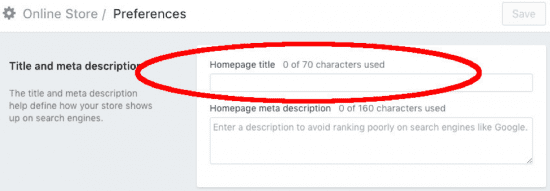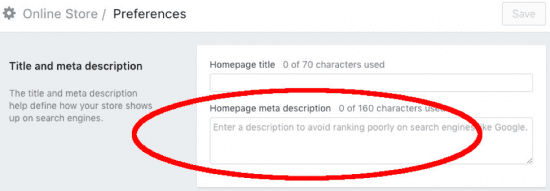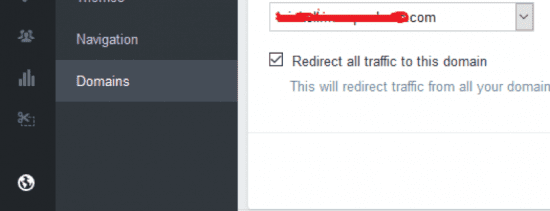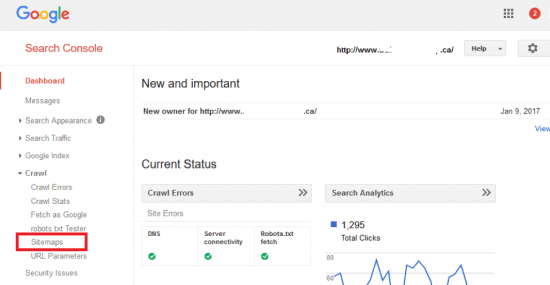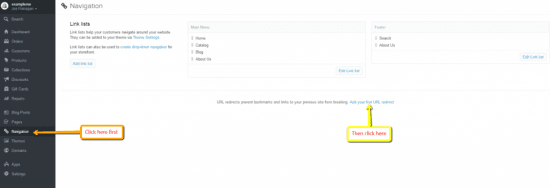Use these features to optimize your Shopify ecommerce platform for search engines
Shopify is one of the most recommended e-commerce platforms used by online sellers to set up their online retail businesses. If you are running a Shopify Ecommerce Platform and looking for some SEO tips for your Shopify store, then look no further! I have compiled a list of SEO tips that are fundamental for running a successful Shopify ecommerce store to increase online visibility. Follow these easy-to-follow tips below to discover all the essentials for improving the SEO of your Shopify store.
What is Shopify and why should you use it?
The Reasons why you should choose Shopify Ecommerce for your online Store:
- Highly flexible and tailor to your specific requirements.
- Easy backend administration
- Shopify has Lots of built-in tools
- Advanced ecommerce CMS Platform with fantastic Search Engine Optimization (SEO) features.
- Shopify Ecommerce Platform is easy to use with no coding skills required; you automatically save time and money.
What do you get with Shopify Ecommerce Platform?
- Web based Content Management System to update your website and online store
- Meets full W3C standards
- Fully secure payment gateway
- Easily Integrates with POS systems
- Customized website design and full control of HTML & CSS
- Customer support with technical Advisor help
SEO TIPS for Shopify Ecommerce Platform
So you have setup the newly Shopify platform for your online store and want to implement SEO techniques. Shopify is advanced ecommerce Content Management System & shopping cart with built in Search Engine Optimization elements. These SEO elements ensure the enhanced traffic and sale to your website from search engines (Google, Yahoo and Bing).
Following are the 12 major tips that need to be covered for improving the SEO of your SHOPIFY store:
1. Remove Duplicate Content from your Store
Duplicate content generally refers to the content that completely matches with other web page content. For any Shopify website, duplicate content can be a disaster in the search engine, if Google, Bing, Yahoo and other search engines and your store will be penalized.
Just in case, you should perform tests and checks as often as possible in order to make sure all of your content is 100% unique. Luckily, there are tools like Copyscape Plagiarism Checker, which will detect duplicate content.
According to Google Content Guidelines, Google describes duplicate content as:
Substantive blocks of content within or across domains that either completely match other content or are appreciably similar. Mostly, this is not deceptive in origin. Examples of non-malicious duplicate content could include:
- Discussion forums that can generate both regular and stripped-down pages targeted at mobile devices
- Store items shown or linked via multiple distinct URLs
- Printer-only versions of web pages.
2. Create Unique Page Title and Right Meta Descriptions for Your pages
Title and Meta Description tags are important elements of any website for search engine rankings. The title tag and the meta description tags should include keywords related to the page content. These unique page meta data helps search engine to understand what the page is all about.
Each Title and Description must be written according to SEO best practices. The minimum word count for Title should be 60 character and 160 characters for the description tag. This is a time-consuming process, but it is something you should definitely do, as it can help increase your search engine rankings.
In your shopify store, Head to Online Store > Preferences to change yours Title and Description.
PRO Tip: Avoid using stop words like: “the”, “an” and “a” “or”, “but” “thus” and if”.
Use this format: Primary Keyword – Secondary Keyword | Brand Name
When it comes to using images on a Shopify website you must optimize the images for search traffic.
3. Optimizing Your Store Images
Image Optimization is necessary for Your Shopify store to improve the website presence in Google and other search engines. All images must include the proper Alt tags with relevant keywords.
While creating alt tags for your images, the key points to consider are:
- Always add a proper description, without stuffing your keywords.
- Use unique alt tag
- Alt tag needs to be short and describe clearly about the image.
- Don’t add alt tags for buttons and smaller images
To add alt text to Shopify, follow these steps:
- From your Shopify admin, click Products.
- Click on the product name that you want to edit.
- Hover over the product image and click ALT:
- Add or edit your alt text in the Image alt text
- Click Done to save the text.
4. Always Link your Products from the Home Page
Home page is the main page of the website and also most powerful page among all other pages. Creating text navigation links on your homepage gives a clear path to your site visitors
Not linking your products from home page is a common mistake most store owners make at some point, and as a result, your important pages will be hidden deep in the store making it much harder for your prospective customers to find them and, ultimately, buy your product.
PRO Tip: Make sure all of your product pages or important pages are visible at the top of the homepage via text navigation. By doing this, you literally serve them in front of your visitors. You can also include a search box .
5. Technical SEO for Shopify is mandatory
Technical SEO refers to any SEO activities/elements that does not include the “content” SEO. Ensure the followings elements with proper search engine guidelines:
- Checking a robots.txt file so bots can crawl the site.
- Ensure the site have sitemap.xml file and add sitemap.xml to Google Search Console
- Create a Google Webmaster Tools account and verify your ownership
- Create and Install Google Analytics.
- Validate HTML and CSS.
- Correct any crawl errors and redirect issues.
- Proper use of Heading tags (H1, H2 H3 and so on)
- Canonical tag and Domain Canonicalization
- Run the URL through a tool like GTMetrix and Google PageSpeed Insights to Analyze the site’s speed on all devices.
6. Canonical tag and Domain Canonicalization
Canonicalization refers to merging pages when there are multiple. Any Shopify store can have three to five versions:
- http://example.com
- http://www.example.com
- https://example.com
- https://www.example.com
All of the above pages are working with the same content, and none of these are redirected to a single page. This can result in a duplicate content issue on Google, and you can face penalties.
In your Shopify store, Head to Online Store > “Domains” then select “Redirect all traffic to this domain”:
Canonical tag
A canonical tag (“rel canonical”) is a way of telling search engines that this is a preferred version of the url you want to appear in search results. Proper usage of canonical tags will help to prevent duplicate content issues from search engines.
The same product page has dynamic URLs as below:
https://www.example.com/products?category=dresses&color=green
https://example.com/dresses/cocktail?gclid=ABCD
https://www.example.com/dresses/green-dresses-are-awesome
The 3rd URL should markup the canonical tag.
<link rel=”canonical” href=”https://www.example.com/dresses/green-dresses-are-awesome ” />
Steps to adding a canonical tag:
- In your Shopify admin, click Online Store, and then click Themes.
- Find the theme you want to edit, click Actions, and then click Edit code.
- Under Layout, click theme.liquid.
- Paste the following code on the line above the closing </head> tag:
<title>
{{ page_title }}{% if current_tags %} – tagged “{{ current_tags | join: ‘, ‘ }}”{% endif %}{% if current_page != 1 %} – Page {{ current_page }}{% endif %}{% unless page_title contains shop.name %} – {{ shop.name }}{% endunless %}
</title>
{% if page_description %}
<meta name=”description” content=”{{ page_description | escape }}” />
{% endif %}
<link rel=”canonical” href=”{{ canonical_url }}” />
Then click save!
Shopify have can give guidance to help you with this.
7. Add your sitemap.xml to Google Search Console
A sitemap is a file where you can add all pages of your website to tell Google and other search engines to crawl/index the website pages efficiently on regular basis. Shopify stores automatically generate a sitemap.xml file that contains all links to all your website including products.
You need to submit your sitemap to Google Search Console or Bing webmaster Tool so that your site can be easily crawled and indexed by Google. In Shopify the sitemap is located at the root directory of the store e.g example.com/sitemap.xml
To submit the sitemap to Google Search Console:
- Sign in to Google Search Console
- Click on your website URL
- On left side click on sitemap and Add/Test Sitemap
But, remember, it may take a few days to process your request.
8. Google Analytics Integration
Google Analytics integration is a must to track and report website traffic.
Pro Tip: Always add Universal Analytics code, which is the latest version of Google Analytics.
Open your Shopify store Admin >click Online Store >click Preferences> Paste your tracking ID code snippet into the Google Analytics account field
9. Build High-Quality Backlinks to Your Shopify Store
Do you want to enhance the number of visitors to your Shopify store? Quality backlinks is a very popular and good tip for everyone, you can get quality and targeted traffic quickly by creating a profile of your store on Amazon, Yelp and multiple other websites. You will get strong backlinks as well as traffic in return, which will be a booster for your website.
10. Don’t inadvertently neglect to Set Up 301 Redirects for Old Product Pages
In Shopify, if your product goes out of stock, or moved to a new page, and you want search engines to pick up on this, 301 redirections are the perfect solution.
If you have deleted your out of stock pages and not redirecting to a new page, there will be a decrease in sales because you aren’t helping your customer find the product they are looking for or alternatives they may be interested in. The solution for this is to create a URL redirect from your Shopify admin.
Online Store> Navigation> URL Redirects:
When to Use 301 redirection:
- When website pages/products are removed/moving to a new location
- The product goes out of stock.
- Domains that are permanently moved
- If there are 404 pages and expired content
11. Install the free Product Review App
There is a variety of Shopify Apps to help you optimize your store. There are free as well as paid apps.
Shopify product reviews is a free app to engage with your customers and add the product reviews to your online store. You can get this product review app for your store.
Benefits of using this free app:
- It helps to Increase the sales of your products.
- Add your product review scores to your Google search results.
12. Configure the blog feature in your Shopify Platform
Your Shopify store comes with a built-in blog feature. Content Marketing is a great way to build your audience, earn more exposure and drive more traffic and sales for your online business. It is highly recommended to add fresh/quality content regularly.

